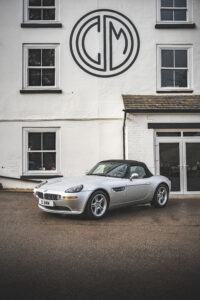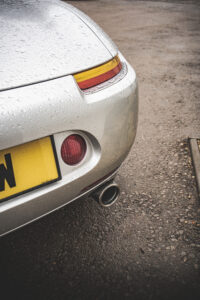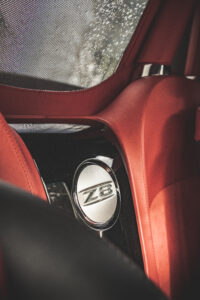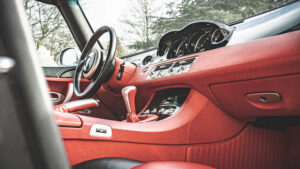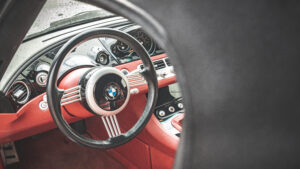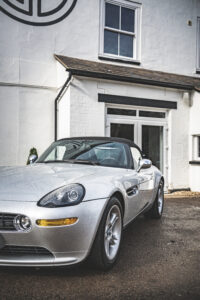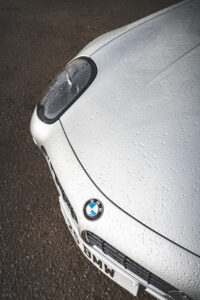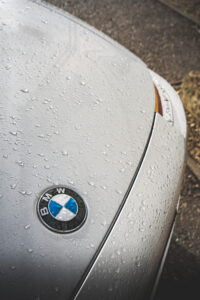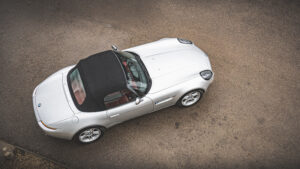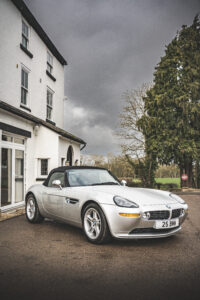Is this the best-looking BMW of all time? That’s debatable, but it sure beats an X6.
So, here we are again: another day, another discussion about BMW styling. Look, we know it’s a drum beaten so relentlessly of late that we’re probably going to break our drumsticks soon, but there’s no getting around the elephant – or in the case of the current M3, the beaver – in the room.
Very few could put forward a convincing argument that we’re currently in a golden age of BMW design, but if that’s the case, then when was it at its best? The 1990s were a strong contender. The decade began for BMW with the pointy and dramatic E31 8 Series, and ended with the E46 3 Series, a design so well resolved it’s never failed to look fresh even with over 20 years of changing tastes and styles behind it.
Then, right at the end of the decade, in November 1999, another new BMW appeared alongside Pierce Brosnan in The World Is Not Enough, where it was one of the highlights of a distinctly mediocre Bond film. Until it got sawn in half, at least. Still, it was enough to draw cinemagoers’ attention to a BMW like none that had gone before: the Z8.
Up to this point, BMW had never been a company to dwell too heavily on its past. Instead, its design had always been firmly rooted in the zeitgeist and occasionally the avantgarde. The late 1990s and early 2000s, though, were a boom time for car designs that were either outright retro pastiches or heavily influenced by retro styles. Some, like the original new Mini and the first Audi TT have become modern design classics in their own right. Others, like the Chrysler PT Cruiser and the final Ford Thunderbird – well, the less said about them the better.
BMW, evidently wanting in on the action, looked to its past and the gorgeous, impossibly glamorous and incredibly rare 507 roadster of the 1950s. Responsibility for the design fell to Henrik Fisker, who would go on to work at Aston Martin before starting his own ill-fated outfit, responsible for the beautiful disaster that was the Fisker Karma.
Previewed in 1997 with the Z07 Concept, the Z8 gave the 507’s lines a turn-of-the-millennium makeover. It kept the classic roadster proportions and the wide, elongated kidney grilles, and details like the little vents behind the front wheels.
Fisker didn’t crib everything, though. This is most noticeable at the rear, where the 507’s unremarkable rear light clusters are replaced by incredibly slim, elegant units that wouldn’t have been possible with 1950s lighting tech.
The interior is even more special, slathered in either silver or piano black, and with touches like the multi-spoked steering wheel and central gauge cluster that look like the Bauhaus futurist stylings of a Fritz Lang film.
Underneath, things were a lot more forward-looking. The 507 had used a V8 – the company’s first – so it was fitting that the Z8 did, too. Rather than employing the M62 that was used in the 5 and 7 Series of the time, the Z8 used a full-fat M engine: the 4.9-litre S62, best known for its service in the E39 M5.
With this 394bhp, M Power-branded engine hooked up to a manual transmission, a lot of early reviewers went into the Z8 expecting a hardcore, race-bred roadster, and came away disappointed. It’s a car that’s benefited from hindsight – in the ensuing years, it’s been reassessed and appreciated for what it is: a big, wholesome, top-down cruiser with a saucy V8 soundtrack and genuine film star good looks.
Good ones are now worth well over £200k, a fairly staggering price for a car that wasn’t actually that rare in the grand scheme of things – just over 5,700 were built over a four-year production span. That price tag, then, must be the product of a brilliant piece of design – take note, BMW.
You can see the Z8 in person at our Retro Strassenkultur weekender, in the Yard at C&M on 4 and 5 March, 2023. Get your tickets now!

